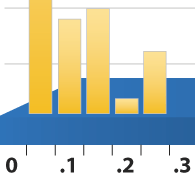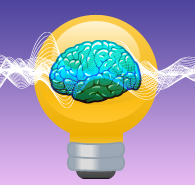Archive for the ‘Efficacy’ Category
Monday, September 27th, 2010
 The following is a brief report on a recent case of recovery from addiction. This was one of the first addiction cases in which we utilized the extension of our software to cover the low frequency range down to 0.1 mHz (milliHertz). Essentially all of the training of this client took place within this range, i.e. with the exception of several Alpha-Theta sessions. The client has given permission for us to tell her story. She is of middle age now, and has been struggling with addiction to heroin and cocaine for the last fifteen years. When she had her first experience with heroin, she knew immediately that she would do anything to repeat it. The cocaine came later. Episodically, she experienced an overwhelming, compulsive drive to use “that blows everything else away.” She was unable to resist, and in these episodes nothing else mattered. With that lifestyle came going to the bad parts of town, and dealing with people one would rather avoid. “It pulls you into this dark place that makes you hate yourself. It is addiction at its worst.” The following is a brief report on a recent case of recovery from addiction. This was one of the first addiction cases in which we utilized the extension of our software to cover the low frequency range down to 0.1 mHz (milliHertz). Essentially all of the training of this client took place within this range, i.e. with the exception of several Alpha-Theta sessions. The client has given permission for us to tell her story. She is of middle age now, and has been struggling with addiction to heroin and cocaine for the last fifteen years. When she had her first experience with heroin, she knew immediately that she would do anything to repeat it. The cocaine came later. Episodically, she experienced an overwhelming, compulsive drive to use “that blows everything else away.” She was unable to resist, and in these episodes nothing else mattered. With that lifestyle came going to the bad parts of town, and dealing with people one would rather avoid. “It pulls you into this dark place that makes you hate yourself. It is addiction at its worst.”
Before beginning neurofeedback, she has participated in twenty-five rehabilitation treatments for her addiction over the last fifteen years, and has been through multiple incarcerations related to drug use. She was taking Suboxone, itself an opiate used to detox people from heroin. This helped to manage her heroin addiction and moderate her cravings.
(more…)
Posted in Clinical Results, Efficacy, Neurofeedback | No Comments »
Wednesday, March 10th, 2010
 The first convincing evidence for EEG feedback efficacy in the management of pathophysiology was with regard to generalized seizures. The early work by Sterman, Lubar, as well as the subsequent follow-up by others, therefore remains a crucial point of reference for the various feedback techniques that have built upon the early protocol of SMR reinforcement combined the theta-band and high-beta band inhibition. Remarkably, the essential features of the early approach have been retained in the various evolutionary pathways that have emanated from the early work. This essential similarity has perhaps obscured other aspects of the training approach that have changed substantially over time, the significance of which may not have been fully appreciated except in reflection. In this newsletter we consider some of these changes and their implications generally, as well as for seizure management in particular. The first convincing evidence for EEG feedback efficacy in the management of pathophysiology was with regard to generalized seizures. The early work by Sterman, Lubar, as well as the subsequent follow-up by others, therefore remains a crucial point of reference for the various feedback techniques that have built upon the early protocol of SMR reinforcement combined the theta-band and high-beta band inhibition. Remarkably, the essential features of the early approach have been retained in the various evolutionary pathways that have emanated from the early work. This essential similarity has perhaps obscured other aspects of the training approach that have changed substantially over time, the significance of which may not have been fully appreciated except in reflection. In this newsletter we consider some of these changes and their implications generally, as well as for seizure management in particular.
The common thread in most modern neurofeedback approaches is the combination of a reinforcement strategy on one EEG frequency or another and an inhibit strategy based on detection of excursions into dysregulation. Some issues relating to the inhibit side have been relegated entirely to the software, thus removing them from ready visibility. Artifact detection and the division of labor between that and the conventional inhibits is a case in point. Specific targeting strategies typically remain to the discretion of the practitioner, as for example with respect to thresholding, placement, and frequency band selection. The general thrust over time has been to broaden the “field of view” of this EEG-based disregulation detector, mainly with respect to the frequencies being targeted, but sometimes also in terms of placement. Multi-channel instruments allow independent choice of placement for the reward and the inhibit strategies. Fortuitously, the various inhibit strategies being actively used—-though differing significantly from each other—-have not been wrapped up in much controversy.
(more…)
Posted in Application of Neurofeedback, Clinical Methods, Clinical Results, Efficacy, Neurofeedback | No Comments »
Monday, November 23rd, 2009
 Even before the usual fire season got underway in Southern California this year, we had one of the largest fires ever in the Angeles National Forest. It was arson-set, and suspicion is cast on an immigrant who developed mental health issues over the past few years. Just fighting the fire cost the state nearly $100M, and that does not count the resource loss, the loss of carbon capture in future years, the impending flooding damage, etc. Arson is notoriously difficult to prosecute. Fingering an arsonist often involves putting evidence together from a number of instances to detect a pattern. This means that the arsonist is taken out of action late in his career, after a lot of damage has already been done. Further, success in that effort means so little in societal terms. At best it takes one arsonist out of circulation, one from a population pool of 16 million people. Even before the usual fire season got underway in Southern California this year, we had one of the largest fires ever in the Angeles National Forest. It was arson-set, and suspicion is cast on an immigrant who developed mental health issues over the past few years. Just fighting the fire cost the state nearly $100M, and that does not count the resource loss, the loss of carbon capture in future years, the impending flooding damage, etc. Arson is notoriously difficult to prosecute. Fingering an arsonist often involves putting evidence together from a number of instances to detect a pattern. This means that the arsonist is taken out of action late in his career, after a lot of damage has already been done. Further, success in that effort means so little in societal terms. At best it takes one arsonist out of circulation, one from a population pool of 16 million people.
The same holds true for pedophiles. By the time they are apprehended, they have typically already offended against a large number of children. Serial killers are typically also caught only after many years of violence. Again, a pattern needs to be detected before a serial killer can even be hypothesized. Financial skullduggery is usually discovered only after many years, or it reveals itself when it collapses of its own internal contradictions. Of course we find some satisfaction in the prosecution of these criminals, but in the larger scheme of things the remedy is unavailing if justice arrives so late upon the scene. How might things be otherwise?
(more…)
Posted in Application of Neurofeedback, Commentary, Disregulation, Efficacy, Neurofeedback | 3 Comments »
Friday, October 2nd, 2009
 Last May, Science Magazine featured a review of a recent study of human health going back some 10,000 years. Surprisingly, perhaps, our state of health has been declining generally over the last 3,000 years, coinciding essentially with the broad adoption of agriculture. The trends are not subtle, apparently. Statures have shrunk, and there was an increase in skeletal lesions, tuberculosis, and leprosy. People started living closer together, and in more intimate contact with livestock—the formula for increases in contagion in general, and of animal-to-human viral transfer in particular. Last May, Science Magazine featured a review of a recent study of human health going back some 10,000 years. Surprisingly, perhaps, our state of health has been declining generally over the last 3,000 years, coinciding essentially with the broad adoption of agriculture. The trends are not subtle, apparently. Statures have shrunk, and there was an increase in skeletal lesions, tuberculosis, and leprosy. People started living closer together, and in more intimate contact with livestock—the formula for increases in contagion in general, and of animal-to-human viral transfer in particular.
The switch to grain-based diets had further consequences for dental health, with cavities and tooth loss becoming more of a problem. Vitamin deficiency diseases such as rickets and scurvy became more prevalent during the Dark Ages. This trend only began to be broken in the middle of nineteenth century, presumably due to increased trade, better sanitation, improvements in medicine, and better weather after the Little Ice Age. Since the 1950’s, however, the overall trend has once again been downward, and this is showing up even in trends in stature, which can be taken as a kind of integrative index to health status.
(more…)
Posted in Application of Neurofeedback, Disregulation, Efficacy, Health Care, Neurofeedback, Outreach, Veterans | 3 Comments »
Friday, October 2nd, 2009
 It is time for an update on our collective experience with infra-low frequency neurofeedback training. One impetus is the continuing confusion in the rest of the field about the implications of this kind of training, both theoretically and practically. Some are still skeptical of the whole enterprise. Others are coming to terms with it, but would prefer to regard it as filling certain niches within the panoply of neurofeedback approaches. Such pigeon-holing would nicely leave unperturbed whatever has come before in terms of neurofeedback approaches and understandings. While it is probably true that no single neurofeedback technique will cover all the bases, the infra-low training gives every sign of being broadly applicable to the concerns that surface in neurofeedback offices. It’s not just for PTSD and for the autism spectrum. It follows, then, that it must be folded into our thinking generally about neurofeedback and cannot be compartmentalized. It is time for an update on our collective experience with infra-low frequency neurofeedback training. One impetus is the continuing confusion in the rest of the field about the implications of this kind of training, both theoretically and practically. Some are still skeptical of the whole enterprise. Others are coming to terms with it, but would prefer to regard it as filling certain niches within the panoply of neurofeedback approaches. Such pigeon-holing would nicely leave unperturbed whatever has come before in terms of neurofeedback approaches and understandings. While it is probably true that no single neurofeedback technique will cover all the bases, the infra-low training gives every sign of being broadly applicable to the concerns that surface in neurofeedback offices. It’s not just for PTSD and for the autism spectrum. It follows, then, that it must be folded into our thinking generally about neurofeedback and cannot be compartmentalized.
The most striking clinical reports do relate to PTSD and to the autism spectrum, but that is simply because expectations are so modest with regard to both of those conditions. A reporting bias has crept in because we tend to emphasize those cases that defy the unbelief among the unbelievers. It continues to surprise that results in such “intractable” cases are so quickly achieved. One report found “huge improvements” in only sixteen sessions with respect to startle response, hypervigilance, troubling memories, disturbed sleep, and paranoia. A middle-age woman with an abuse history “benefited greatly” in only five sessions, by which time she reported that her PTSD symptoms were gone (although some sleep issues remained to be dealt with).
(more…)
Posted in Application of Neurofeedback, Efficacy, Neurofeedback | 2 Comments »
Saturday, August 29th, 2009
 We should be grateful, I suppose, that autism is now finally getting attention from the medical community. As late as the 1990’s, parents were still being blamed for the condition by their pediatricians. And until recently the attempts by DAN doctors (Defeat Autism Now) to get at the medical roots of the condition were mocked by their medical colleagues. But the developing mainline approach to autism exhibits the tendencies typical for modern medicine, which is to target the symptoms rather than the condition that gives rise to them. We should be grateful, I suppose, that autism is now finally getting attention from the medical community. As late as the 1990’s, parents were still being blamed for the condition by their pediatricians. And until recently the attempts by DAN doctors (Defeat Autism Now) to get at the medical roots of the condition were mocked by their medical colleagues. But the developing mainline approach to autism exhibits the tendencies typical for modern medicine, which is to target the symptoms rather than the condition that gives rise to them.
What follows is an actual case description of the treatment of sleep disorder and self-injurious behavior in the Child and Adolescent Psychopathology Department of Sainte-Anne’ s Hospital. One of the children presenting with severe autistic behavior exhibited persistent sleep disorder and motor instability even with the standard multidisciplinary program at the hospital. This led to successive prescriptions of several different psychotropic drugs:
(more…)
Posted in Application of Neurofeedback, Autism, Clinical Symptoms, Efficacy, Neurofeedback | 2 Comments »
|
|
Subscribe to Email Newsletter
The EEG Info Newsletter circulates via email at least once a month. A variety of topics related to the Neurofeedback / EEG Biofeedback field are covered in over 200 articles.
|
 The following is a brief report on a recent case of recovery from addiction. This was one of the first addiction cases in which we utilized the extension of our software to cover the low frequency range down to 0.1 mHz (milliHertz). Essentially all of the training of this client took place within this range, i.e. with the exception of several Alpha-Theta sessions. The client has given permission for us to tell her story. She is of middle age now, and has been struggling with addiction to heroin and cocaine for the last fifteen years. When she had her first experience with heroin, she knew immediately that she would do anything to repeat it. The cocaine came later. Episodically, she experienced an overwhelming, compulsive drive to use “that blows everything else away.” She was unable to resist, and in these episodes nothing else mattered. With that lifestyle came going to the bad parts of town, and dealing with people one would rather avoid. “It pulls you into this dark place that makes you hate yourself. It is addiction at its worst.”
The following is a brief report on a recent case of recovery from addiction. This was one of the first addiction cases in which we utilized the extension of our software to cover the low frequency range down to 0.1 mHz (milliHertz). Essentially all of the training of this client took place within this range, i.e. with the exception of several Alpha-Theta sessions. The client has given permission for us to tell her story. She is of middle age now, and has been struggling with addiction to heroin and cocaine for the last fifteen years. When she had her first experience with heroin, she knew immediately that she would do anything to repeat it. The cocaine came later. Episodically, she experienced an overwhelming, compulsive drive to use “that blows everything else away.” She was unable to resist, and in these episodes nothing else mattered. With that lifestyle came going to the bad parts of town, and dealing with people one would rather avoid. “It pulls you into this dark place that makes you hate yourself. It is addiction at its worst.”
 The first convincing evidence for EEG feedback efficacy in the management of pathophysiology was with regard to generalized seizures. The early work by Sterman, Lubar, as well as the subsequent follow-up by others, therefore remains a crucial point of reference for the various feedback techniques that have built upon the early protocol of SMR reinforcement combined the theta-band and high-beta band inhibition. Remarkably, the essential features of the early approach have been retained in the various evolutionary pathways that have emanated from the early work. This essential similarity has perhaps obscured other aspects of the training approach that have changed substantially over time, the significance of which may not have been fully appreciated except in reflection. In this newsletter we consider some of these changes and their implications generally, as well as for seizure management in particular.
The first convincing evidence for EEG feedback efficacy in the management of pathophysiology was with regard to generalized seizures. The early work by Sterman, Lubar, as well as the subsequent follow-up by others, therefore remains a crucial point of reference for the various feedback techniques that have built upon the early protocol of SMR reinforcement combined the theta-band and high-beta band inhibition. Remarkably, the essential features of the early approach have been retained in the various evolutionary pathways that have emanated from the early work. This essential similarity has perhaps obscured other aspects of the training approach that have changed substantially over time, the significance of which may not have been fully appreciated except in reflection. In this newsletter we consider some of these changes and their implications generally, as well as for seizure management in particular. Last May, Science Magazine featured a review of a recent study of human health going back some 10,000 years. Surprisingly, perhaps, our state of health has been declining generally over the last 3,000 years, coinciding essentially with the broad adoption of agriculture. The trends are not subtle, apparently. Statures have shrunk, and there was an increase in skeletal lesions, tuberculosis, and leprosy. People started living closer together, and in more intimate contact with livestock—the formula for increases in contagion in general, and of animal-to-human viral transfer in particular.
Last May, Science Magazine featured a review of a recent study of human health going back some 10,000 years. Surprisingly, perhaps, our state of health has been declining generally over the last 3,000 years, coinciding essentially with the broad adoption of agriculture. The trends are not subtle, apparently. Statures have shrunk, and there was an increase in skeletal lesions, tuberculosis, and leprosy. People started living closer together, and in more intimate contact with livestock—the formula for increases in contagion in general, and of animal-to-human viral transfer in particular. We should be grateful, I suppose, that autism is now finally getting attention from the medical community. As late as the 1990’s, parents were still being blamed for the condition by their pediatricians. And until recently the attempts by DAN doctors (Defeat Autism Now) to get at the medical roots of the condition were mocked by their medical colleagues. But the developing mainline approach to autism exhibits the tendencies typical for modern medicine, which is to target the symptoms rather than the condition that gives rise to them.
We should be grateful, I suppose, that autism is now finally getting attention from the medical community. As late as the 1990’s, parents were still being blamed for the condition by their pediatricians. And until recently the attempts by DAN doctors (Defeat Autism Now) to get at the medical roots of the condition were mocked by their medical colleagues. But the developing mainline approach to autism exhibits the tendencies typical for modern medicine, which is to target the symptoms rather than the condition that gives rise to them.
The Prevention Option
Monday, November 23rd, 2009The same holds true for pedophiles. By the time they are apprehended, they have typically already offended against a large number of children. Serial killers are typically also caught only after many years of violence. Again, a pattern needs to be detected before a serial killer can even be hypothesized. Financial skullduggery is usually discovered only after many years, or it reveals itself when it collapses of its own internal contradictions. Of course we find some satisfaction in the prosecution of these criminals, but in the larger scheme of things the remedy is unavailing if justice arrives so late upon the scene. How might things be otherwise?
(more…)
Posted in Application of Neurofeedback, Commentary, Disregulation, Efficacy, Neurofeedback | 3 Comments »